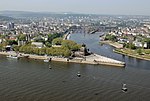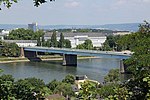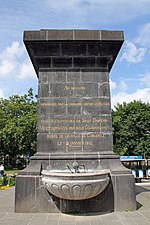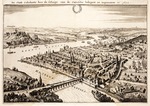Occupation of the Rhineland

The Occupation of the Rhineland from 1 December 1918 until 30 June 1930 was a consequence of the collapse of the Imperial German Army in 1918, after which Germany's provisional government was obliged to agree to the terms of the 1918 armistice. This included accepting that the troops of the victorious powers occupied the left bank of the Rhine and four right bank "bridgeheads" with a 30-kilometre (19 mi) radius around Cologne, Koblenz, Mainz and a 10-kilometre (6 mi) radius around Kehl. Furthermore, the left bank of the Rhine and a 50-kilometre-wide (31 mi) strip east of the Rhine was declared a demilitarized zone. The Treaty of Versailles repeated these provisions, but limited the presence of the foreign troops to fifteen years after the signing of the treaty (until 1934). The purpose of the occupation was on the one hand to give France security against a renewed German attack, and on the other to serve as a guarantee for reparations obligations. After this was apparently achieved with the Young Plan, the occupation of the Rhineland was prematurely ended on 30 June 1930. The administration of occupied Rhineland was under the jurisdiction of the Inter-Allied Rhineland High Commission with its seat at the Upper Presidium of the Rhine Province in Koblenz.
Excerpt from the Wikipedia article Occupation of the Rhineland (License: CC BY-SA 3.0, Authors, Images).Occupation of the Rhineland
Stresemannstraße, Koblenz Altstadt
Geographical coordinates (GPS) Address Nearby Places Show on map
Geographical coordinates (GPS)
| Latitude | Longitude |
|---|---|
| N 50.357416666667 ° | E 7.6019444444444 ° |
Address
Struktur- und Genehmigungsdirektion Nord
Stresemannstraße 3-5
56068 Koblenz, Altstadt
Rhineland-Palatinate, Germany
Open on Google Maps










